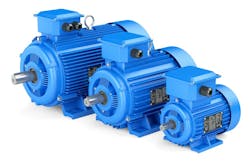The 40-hp drive motor for a critical line stopped running and won’t restart. One of the operators said, “It made a heck of a racket and then everything stopped.” After pulling the motor, you confirmed that it spun a bearing.
Fortunately, your stockroom has a direct replacement sitting on a shelf. Production sends a lift truck operator to go fetch it. You work heroically fast, and before long you are ready to remove your lock and tag from the disconnect.
Grinning broadly, you close the disconnect and ask the operator to restart the line. Success! While you’re being congratulated, there’s suddenly a heck of a racket and an operator says, “That’s what it did before! Did you put the old one back in?”
You double check, out of disbelief. No, it’s the new motor.
The problem is that new motor sat for a long time in the stockroom. By the time the lift truck operator retrieved it, the motor was badly in need of a grease change. The short-term fix is yet another replacement. Be sure to put the new motor on an ultrasonic bearing inspection PM.
About the Author

Mark Lamendola
Mark is an expert in maintenance management, having racked up an impressive track record during his time working in the field. He also has extensive knowledge of, and practical expertise with, the National Electrical Code (NEC). Through his consulting business, he provides articles and training materials on electrical topics, specializing in making difficult subjects easy to understand and focusing on the practical aspects of electrical work.
Prior to starting his own business, Mark served as the Technical Editor on EC&M for six years, worked three years in nuclear maintenance, six years as a contract project engineer/project manager, three years as a systems engineer, and three years in plant maintenance management.
Mark earned an AAS degree from Rock Valley College, a BSEET from Columbia Pacific University, and an MBA from Lake Erie College. He’s also completed several related certifications over the years and even was formerly licensed as a Master Electrician. He is a Senior Member of the IEEE and past Chairman of the Kansas City Chapters of both the IEEE and the IEEE Computer Society. Mark also served as the program director for, a board member of, and webmaster of, the Midwest Chapter of the 7x24 Exchange. He has also held memberships with the following organizations: NETA, NFPA, International Association of Webmasters, and Institute of Certified Professional Managers.
